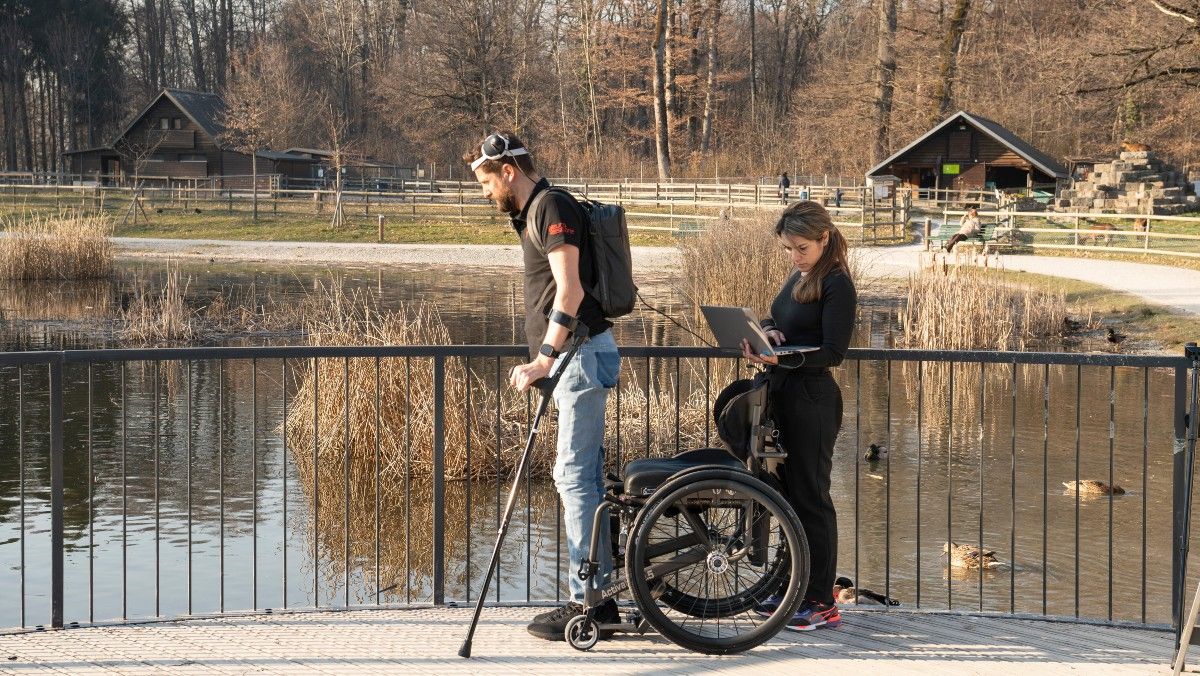the young man Gert-Jan Oskam he was barely 28 years old when a bicycle accident left him fully immobilized from the waist down. For more than ten years, this Dutchman went through every treatment and rehabilitation imaginable, but still, his life continued depending on a wheelchair. But last year something changed. Oskam volunteered to test an experimental treatment that roughly consists of a series of brain implants and a backpack’. Thanks to this technique, Oskam has not only managed to get back on his feet, but also now «he has managed to walk again with some normality».
The incredible story of this young man, and his almost miraculous recovery, is presented this Wednesday in an article in the scientific journal ‘Nature’. It is about of one of the most successful cases presented to date of paraplegic patients who recover (at least in part) mobility thanks to an interface that connects their brain with a computer. «We are before a scientific milestone that opens the door to continue investigating treatments for people who have lost mobility», explains the neuroscientist Gregoire Courtineresearcher at the Lausane Polytechnic School (Switzerland) and one of the main architects of this achievement.
Until now, it had never been possible to create a device capable of being ‘activated’ only by the thought of the patient
Until now, all experimental treatments of this type had achieved some kind of improvement as long as the electrodes were turned on and after a long period of training. In this case, however, the implants were calibrated in a matter of minutes and, thanks to them, Oskam was able to return to stand up, walk, climb stairs and even traverse complex terrain tan only with the help of crutches. As enthusiastically explained by the scientists who have designed this treatment, after more than a year of appliance therapythe patient even regained the ability to walk with the electrodes off.
The (complex) art of walking
To understand the importance of this milestone, it is worth, as always, to take a step back and understand how an action as apparently simple as walking is produced. To stand up and start walking, our brain has to execute a series of complex signals que are sent through the spinal cord and that activate the reflexes necessary for walking. From there, a complicated choreography begins in which bones, muscles and other body systems coordinate to, for example, support the weight, drive each of the steps and control the balance of the body. But what happens when a person suffers a spinal cord injury? That communication between brain signals and legs is disrupted and the patient is paralyzed.
Scientists around the world have been researching how to reverse this process for decades. I mean, like recover ‘lost connections’ between the brain, spinal cord and extremities. One of the leading teams in this field is precisely the one led by Courtine and Jocelyne Bloch, a neurosurgeon at the Lausane University Hospital. In 2018, this team announced that it had made three paraplegic patients walk again thanks to a constellation of tiny brain implants.
In 2022, the case of three more patients appeared who walked again one day after receiving these appliances. Gert-Jan Oskam — the patient who stars in this news story — was part of the latter group but, as he explains, after three years those using implants noticed that he was not improving and that his life continued to be tied to a wheelchair.
«Something that at first seemed like science fiction has become a reality»
Jocelyne Bloch
It was then that the team of Swiss scientists feared try a new treatment based on the creation of a «digital bridge» between the brain and the spinal cord. The therapy consists, on the one hand, in two brain implants with 64 electrodes each and, on the other, in a homologous device implanted in the marrow. Both devices work in a coordinated way thanks to a control center located in a backpack to measure brain activity and stimulate all the mechanisms related to the process of walking instantly and at the patient’s own will. Never, until now, had it been possible to create a device capable of being ‘activated’ by thought alone of the patient. «Something that at first seemed like science fiction has become reality,» explains Jocelyne Bloch.
Next steps of the investigation
The story of this patient has been received with great joy by the international scientific community because, beyond this specific case, it opens the door to continue investigating how to help so many other people in this same situation. «We are facing some very spectacular news that indicates problems are the most promising paths to continue investigating», stresses Dr. Joan Vidal Samsoprincipal investigator of the department of neurorepair and advanced therapies of the Guttmann Institute of Barcelona, in an interview with EL PERIÓDICO.
«You have to be very careful and not create false expectations, because these types of tools are still in the experimental phase»
Joan Vidal Samsó, from the Guttmann Institute of Barcelona
Related news
Until now, the main lines of research have focused, on the one hand, on cell therapies (stem cell transplant) and in the electrical stimulation of the spinal cord. As Vidal explains, the use of electrodes is, for now, the most promising technique to help patients with mobility problems. But before claiming victory, this expert launches two important warnings. The first is that «you have to be very careful between showing enthusiasm for a scientific advance and do not create false expectationsbecause These types of tools are still in the experimental phase.«.
And second, «in recent years we have seen many technical advances but we still we need to continue investing in this area of study so that one day this type of therapy can reach all patients who need it».

